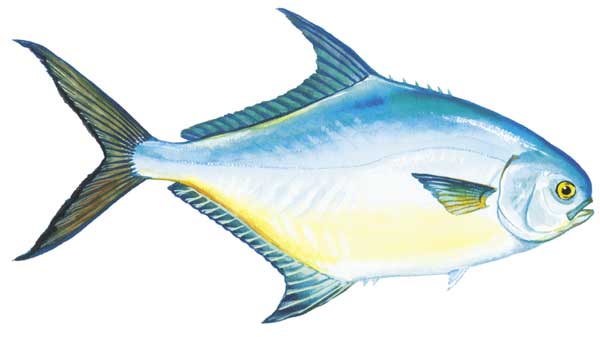
The preliminary data from the Calcasieu Lake speckled trout study is revealing some interesting findings.
The term “spawning aggregation” is one that recreational fishermen are likely to learn in the future. The term simply refers to a synchronized spawning event by a number of fish that are not normally schooling species.
Many species that form spawning aggregations do so at the same site year after year. Fish at spawning aggregations are concentrated in numbers and are not wary, making spawning aggregations very easy targets for fishermen, perhaps too easy. Sites of known spawning aggregations are among the first to be considered for marine-protected-area status, where fishing is permanently prohibited.
Many species, including some jacks and perhaps most groupers, form spawning aggregations. Groupers spend most of the year staking out a patch of water bottom as solitary predator fish. But during spawning season, they may move hundreds of miles to form a spawning aggregation, ranging in size from 20-100 fish for the goliath grouper (jewfish) to 100,000 for Nassau groupers.
One jack known to form spawning aggregations is the permit. Permit, which resemble a giant-sized version of their close relative, the Florida pompano, are a very valuable sport fish, especially in the southern Gulf of Mexico, where they enter much shallower waters than off of Louisiana.
Biologist divers closely studied two permit spawning aggregations in the Caribbean off the coast of Belize, Turneffe Elbow and Gladden Spit. The sites are reef peaks, with sloping shelves that drop off steeply at depths of 115-150 feet to more than 3,300 feet.
At Turneffe Elbow, the divers observed 250-500 permit near the top of the reef after the full moon in August. The group of fish streamed over the surface of the reef above the drop-off. At 41 minutes before sunset, the fish began to gather near the reef edge, and by 26 minutes before sunset, the permit formed a dense school right at the edge of the drop-off.
Then a 40-inch fish left the school, trailed by 7 other fish, each from 22-30 inches long. The larger fish (assumed to be female) swam upwards, with the smaller fish, assumed to be males, following and bumping its vent with their snouts.
At about 50 feet from the surface, the lead permit stopped swimming, tilted its head down slightly, shuddered and released a puff of eggs. The male permit positioned their vents as close as possible to the vent of the larger fish, and released their sperm. This activity was repeated over and over again by small groups leaving the dense school until it became too dark for further observation.
Spawning activity was very similar for permit at Gladden Spit. There, a similar number of large permit, some over 48 inches long, formed a dense ball of fish at the edge of the reef drop-off in 130-160 feet of water. Subgroups of five to nine fish, with the lead fish being the largest, rose on the edge of the school until they were over it, spawned and then dropped back into the school. Spawning took place 10 days after the full moon in April, and began at 66 minutes before sunset.
At the same time, at this site, a school of yellow jacks spawned in identical fashion as the permit, only 50 yards from the permit spawning aggregation.
At both sites, the spawning permit developed a large dark-colored patch on each side, above and behind the pectoral (side) fins. Fish in the spawning aggregations showed little fear of divers, a behavior common in fish that form aggregations to spawn.
Not all jacks are group-spawners. The scientists on numerous occasions saw pair-spawning occurring in schools of crevalle jacks, horse-eye jacks and bar jacks in schools of more than 1,000 fish, in rainbow runners in schools of 300 fish and occasionally greater amberjacks in schools of about 120 fish. These spawnings took place on full moons or after full moons between February and October.
In these five species, a male and a female fish would pair off from the group and swim near the reef edge, with the male closely following the female and nuzzling her vent until she discharged her eggs. In all species, spawning females’ heads and upper bodies turned black. Male amberjack turned a vivid electric blue color with a scrawled pattern on their uppersides.
Jerald Horst is an author of the Angler’s Guide to Fishes of the Gulf of Mexico, a 444-page, color-illustrated book on fishes written for saltwater fishermen. The book is available in better bookstores or can be ordered by calling 800-843-1724.


